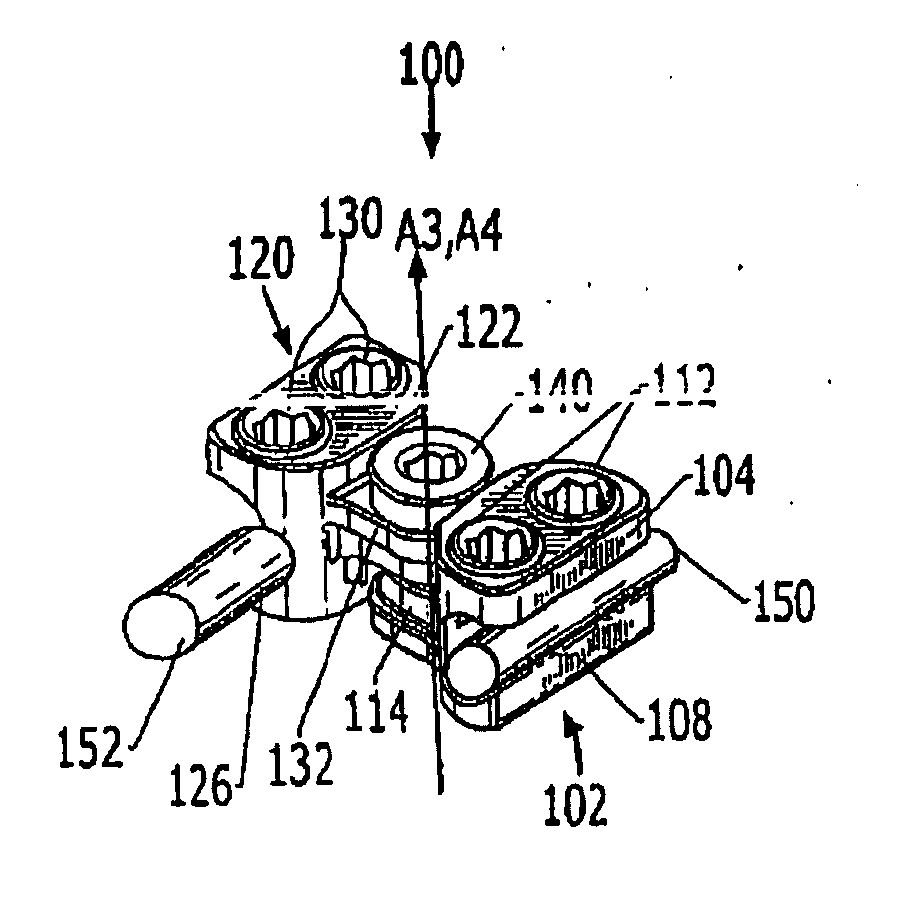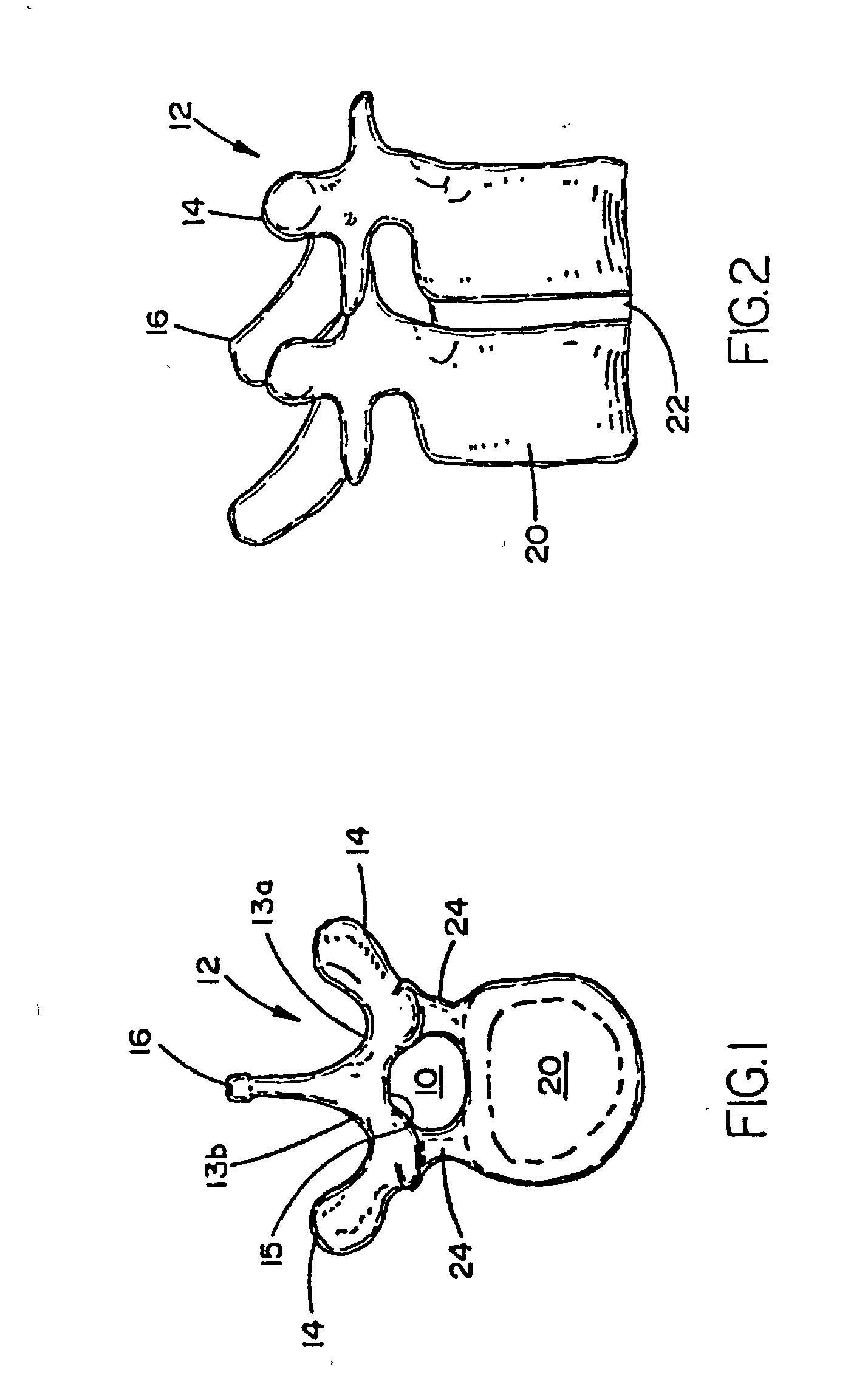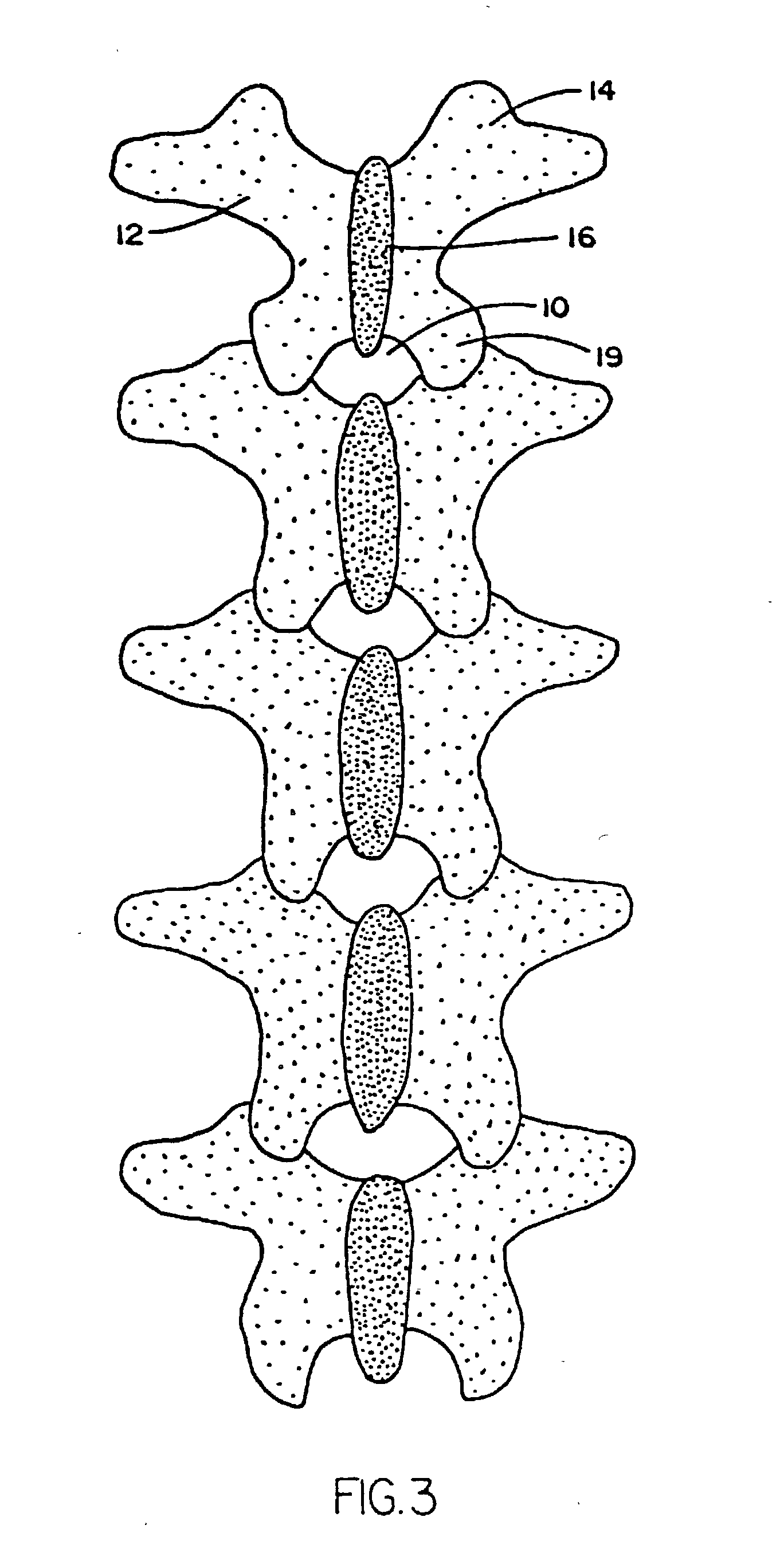[0010] Connector embodiments of the present invention are configured to address different surgical needs and techniques for interconnecting multiple
bone fixation devices (such as rods or plates between vertebrae). As a first aspect, the present invention is directed to a connector that comprises: first and second
mating members, each of the members including a body portion, a
mating projection and a recess adapted to engage a respective one of at least two
bone fixation rods; first and second retaining members; and a
fastener. The body portions of the mating members include an aperture having a longitudinal axis that is generally perpendicular to longitudinal axes of the rods, and the mating projections of the first and second mating members include an aperture, the
mating projection of the first mating member overlying the
mating projection of the second mating member such that their respective apertures are generally axially aligned. The first and second retaining members are inserted into, respectively, the body portion apertures of the first and second mating members to engage a respective rod. The
fastener is inserted through the
mating projection apertures of the first and second mating members. When the fastener is in a tightened condition, the first and second mating members are prevented from relative rotation, and when the fastener is in a loosened condition, the first and second mating members are free to rotate about an axis of rotation that is generally parallel to the longitudinal axes of the body portion apertures of the first and second mating members. In this configuration, the connector can be manipulated in the
coronal plane of the subject to interconnect non-parallel rods, and the rods can be secured and the connector tightened easily by a surgeon from above the spine.
[0011] As a second aspect, a connector of the present invention that can interconnect at least two
bone fixation rods comprises: a body portion, a mating projection and a recess adapted to engage a first bone fixation rod; an extension shaft; and a fastener. The mating projection of the body portion has an aperture having a longitudinal axis generally perpendicular to the longitudinal axis of the first rod. The extension shaft has a shank with a slot therein, the shank being inserted into and rotatable relative to the mating portion aperture, and the slot being adapted to receive a second bone fixation rod. The fastener engages the shank of the extension shaft. When the fastener is in a tightened condition, the fastener, shank and mating projection engage the second rod and prevent relative movement thereof, and preferably, when the fastener is in a loosened condition, the second bone fixation rod is free to slide relative to the mating projection parallel to the longitudinal axis of the rod. A retaining member (such as a
set screw) can be used to secure the first rod in the recess. This connector embodiment also enables a surgeon to secure bone fixation rods from above the spine.
[0012] As a third aspect, a connector of the present invention for interconnecting bone fixation rods comprises: first and second mating members; first and second retaining components; and a fastener. Each of the first and second mating members includes a body portion, a mating projection and a rod pocket adapted to engage a respective rod. Each of the mating projections of the first and second mating members includes an aperture, and the mating projection of the first mating member overlies the mating projection of the second mating member such that their respective apertures are generally axially aligned. The rod pockets of the first and second mating members having openings positioned above the body portion and facing in a first direction that is generally perpendicular to an axis located between the first and second rod pockets. The first and second retaining components (such as set screws) couple from above with, respectively, the rod pockets of the first and second mating members to secure a bone fixation respective rod. The fastener is inserted through the mating projection apertures of the first and second mating members. This configuration also enables a surgeon to secure bone fixation rods from above while engaging bone fixation rods from below.
[0013] As a fourth aspect, a connector embodiment of the present invention for interconnecting bone fixation rods comprises: a body portion; first and second rod pockets; and first and second retaining components. Each of the rod pockets includes an opening positioned above the body portion and facing in a first direction generally perpendicular to the rod longitudinal axes. The first rod pocket is rotatably attached with one end of the body portion such that the first rod pocket is rotatable relative to the body portion over at least two axes of rotation. The first and second retaining components couple from above with, respectively, the rod pockets of the first and second mating members to secure a respective rod. This connector configuration enables the surgeon to adjust the position and angle of the rod pocket to meet the positional requirements of the rods, and to do so from beneath the rods, while retaining the ability to tighten and secure the rods from above the spine.
 Login to View More
Login to View More  Login to View More
Login to View More 


